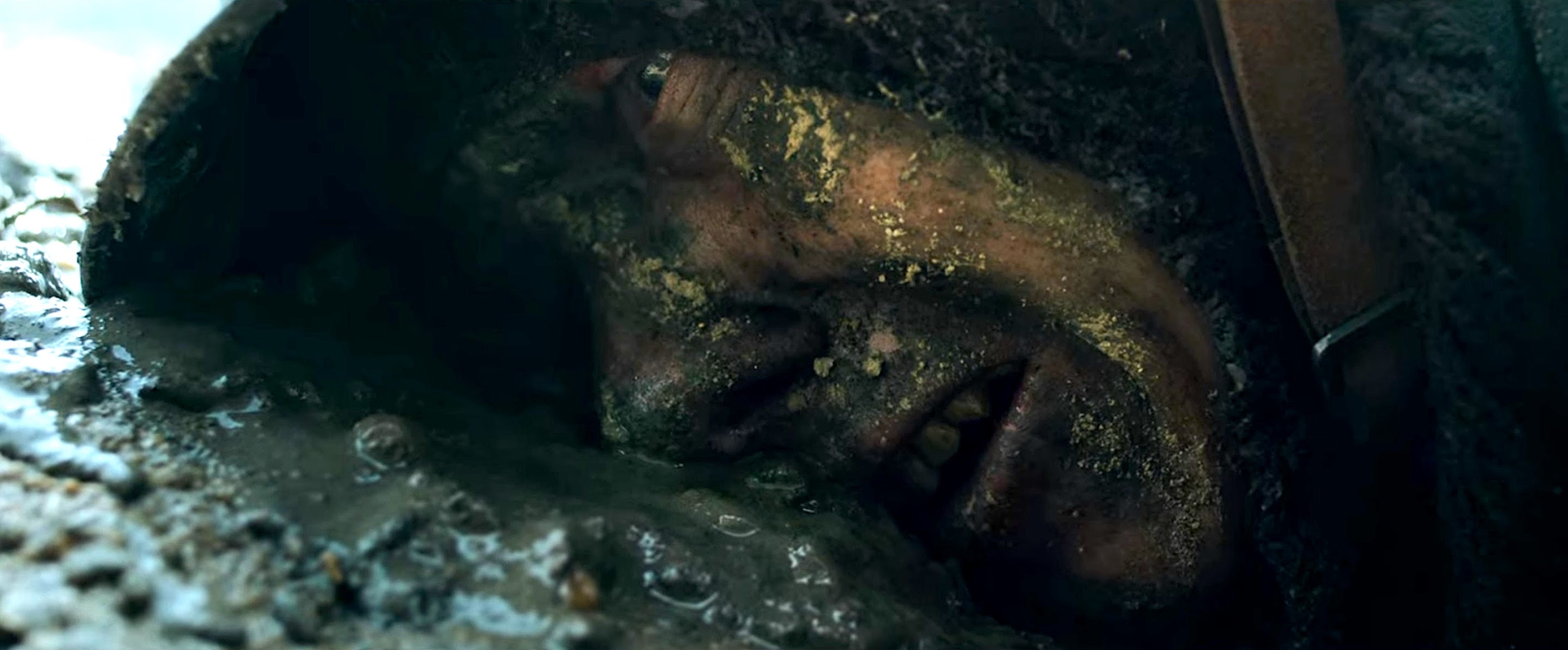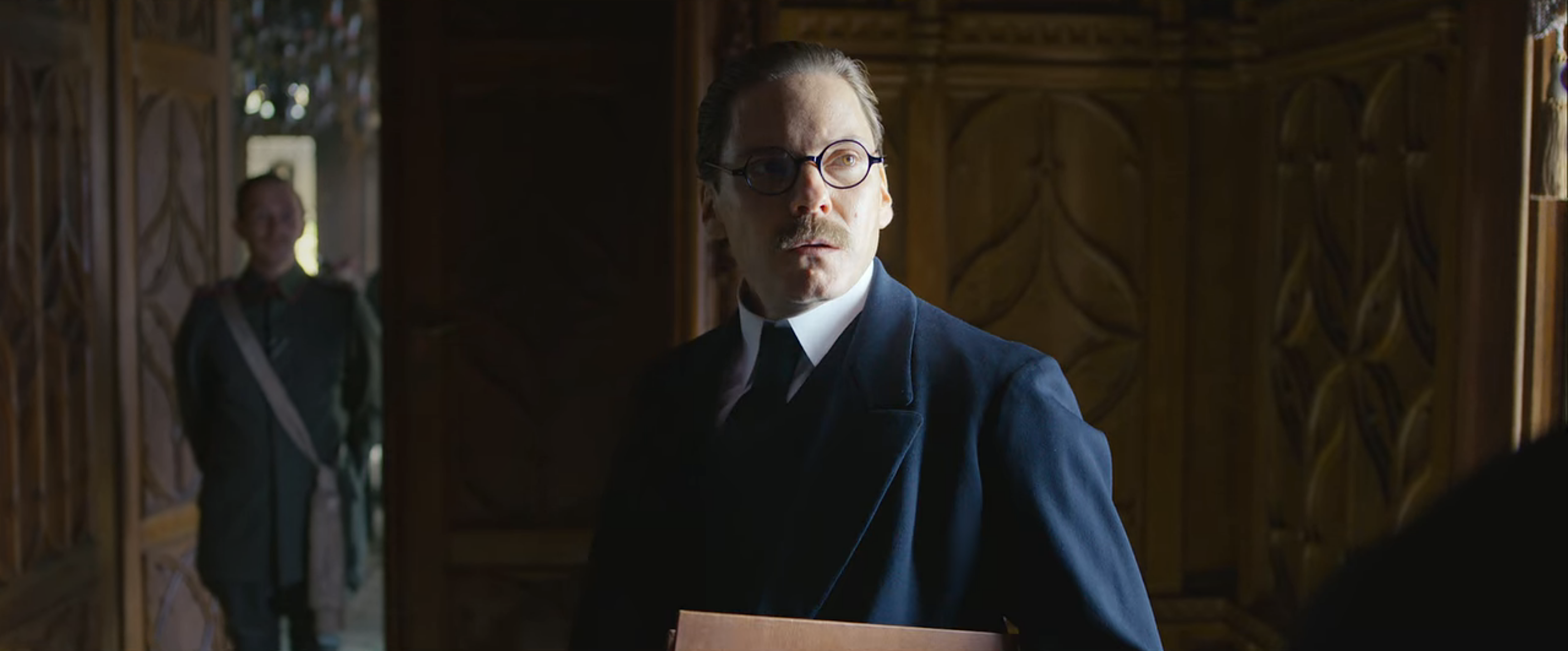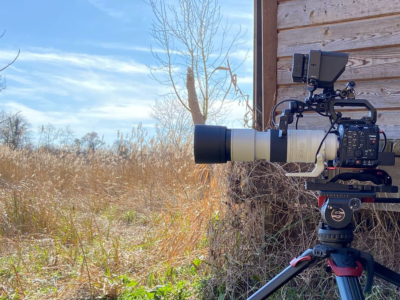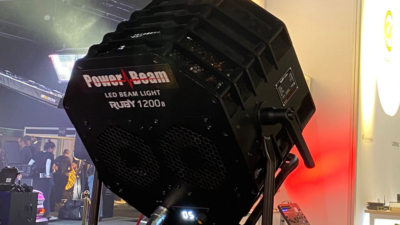
Comme c’était mon premier Camerimage, j’espérais commencer le festival avec un film qui réunisse tous les éléments que j’aime dans le cinéma – une histoire forte avec des personnages auxquels on s’attache et des images saisissantes qui vous transportent dans une autre époque – et voir « All Quiet On The Western Front » au cinéma, sur grand écran, a répondu à toutes mes attentes.
Se déroulant vers la fin de la Première Guerre mondiale, le film suit quatre amis qui s’engagent avec empressement dans l’armée allemande pour participer au combat. Accueillies par un grand discours patriotique, les jeunes recrues sont imprégnées de passion et de détermination lorsqu’elles prennent leurs uniformes et effectuent joyeusement leurs premières marches – mais bien sûr, cet enthousiasme juvénile est rapidement écrasé par les réalités et les horreurs de la guerre.

Nous observons l’un des quatre amis, Paul Bäumer, qui passe du statut de jeune homme innocent et plein d’espoir à celui de soldat terrifié tentant de survivre, puis enfin à celui de soldat éprouvé par le combat mais épuisé sur le plan émotionnel, qui fait ce qu’on lui dit de faire. Son destin et celui de tous ceux qui l’entourent reposent entre les mains d’un général déterminé à poursuivre le combat et à remporter la victoire, quel qu’en soit le prix.
Conscient que la guerre est déjà perdue, le vice-chancelier allemand Erzberger entame des pourparlers d’armistice avec le général français Maréchal. Cependant, l’insistance de Maréchal à faire souffrir l’Allemagne oblige Erzberger à choisir entre un accord comportant des conditions sévères pour l’Allemagne et la poursuite d’une guerre dévastatrice.

Pour développer les images impressionnantes du film, le directeur de la photographie James Friend a utilisé une Alexa 65 principalement pour les plans d’ensemble et une Alexa MiniLF pour plonger les spectateurs dans les tranchées.
Friend a également varié son choix d’objectifs, tournant avec une combinaison d’objectifs Arri Rental Prime 65 S, Prime DNA et même son propre jeu d’objectifs Blackwing 7, en fonction du format, des conditions d’éclairage et de l’impression générale qu’il essayait d’obtenir.
Il varie également son approche de l’éclairage : il utilise souvent un faible contraste, des tons froids et une lumière douce pour créer une sorte d’ambiance cauchemardesque et surréaliste sur le champ de bataille, tandis qu’un éclairage plus chaud mais plus contrasté semble créer une image plus classique mais un peu dure dans les scènes de négociation.

J’ai été très heureux de voir ce film au Camerimage de cette année, mais cela m’a fait penser à l’importance de voir des films comme celui-ci au cinéma. En tant que film Netflix, il n’aura probablement aucune sortie en salle (à l’exception peut-être des festivals) et, bien qu’il soit sûrement agréable à voir dans le confort de nos maisons, si vous le pouvez, essayez de le regarder sur le plus grand écran dont vous disposez, dans le noir et avec des écouteurs. Cela en vaut vraiment la peine !

L’ASC propose une conversation très intéressante entre James Friend ASC BSC et Erik Messerschmidt ASC à propos du tour de force qu’a représenté ce tournage très physique. La vidéo est en anglais mais les nombreux documents montrés pendant la discussion valent largement le détour:
https://ascmag.com/videos/clubhouse-conversations-all-quiet-on-the-western-front
_____
The delight of watching movies on the big screen
Being my first Camerimage I was hoping to start off the festival with a film that had all the elements I love in cinema – a strong story with characters you connect with and striking visuals that transport you to another time – and seeing « All Quiet On The Western Front » in a movie theatre, on the big screen, delivered more than I hoped for.
Taking place towards the end of WWI, the film follows four friends who eagerly enlist in the German army to participate in the fight. Welcomed with a grand and patriotic speech, the young recruits are imbued with passion and purpose as they pick up their uniforms and joyously perform their first marches – but of course, this youthful enthusiasm is quickly crushed by the realities and horrors of war.
We watch as one of the four friends, Paul Bäumer transitions from an innocent and hopeful young man, to a terrified soldier trying to survive to finally a battle-tested but emotionally exhausted soldier who does what he’s told. His fate and the fate of everyone around him resting in the hands of a general who’s determined to keep up the fight and bring home a victory, no matter what the cost.
Aware that the war was already lost, the German Vice-Chancellor Erzberger begins armistice talks with the French General Maréchal. However, Maréchal’s insistence on making Germany suffer forces Erzberger to choose between an agreement with harsh terms for Germany, or the continuation of a devastating war.
To develop the impressive visuals of the film, Cinematographer James Friend utilized an Alexa 65 mostly for establishing shots and an Alexa MiniLF to put viewers in the trenches. Friend also varied his choice of lenses, shooting with a combination of Arri Rental Prime 65 S lenses, Prime DNA lenses, and even Friend’s own set of Blackwing 7 lenses, depending on the format, lighting conditions and overall feeling he was trying to achieve. He also varies his approach to lighting: often using low contrast, cool tones and soft light to create a kind of nightmarish and surreal feel to the battlefield, while warmer but more contrasty lighting seems to create a classic but somewhat harsh quality to the negotiation scenes.
I was very pleased to see this film at this years’ Camerimage, but it made me think about how important it is to see films like this in a cinema. As a Netflix film, it likely won’t have any sort of theatrical release (except for maybe festivals), and although it’ll surely still be great to see in the comfort of our own homes if you can, try to watch it on the biggest screen you have, in the dark and with headphones. It’ll definitely be worth it!
___
The ASC has a very interesting Clubhouse Conversation between James Friend ASC BSC and Erik Messerschmidt ASC about the shooting:
https://ascmag.com/videos/clubhouse-conversations-all-quiet-on-the-western-front
-
Partager l'article


